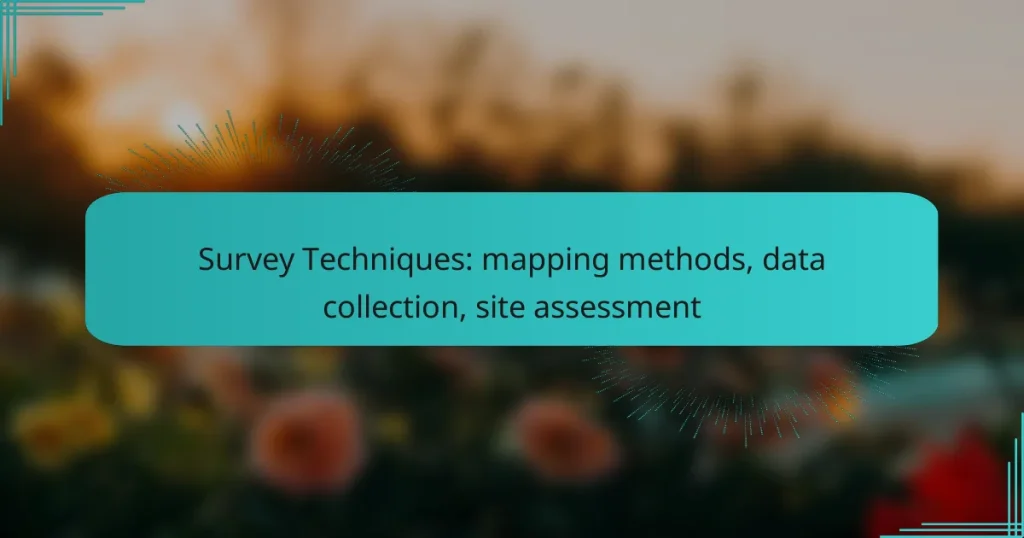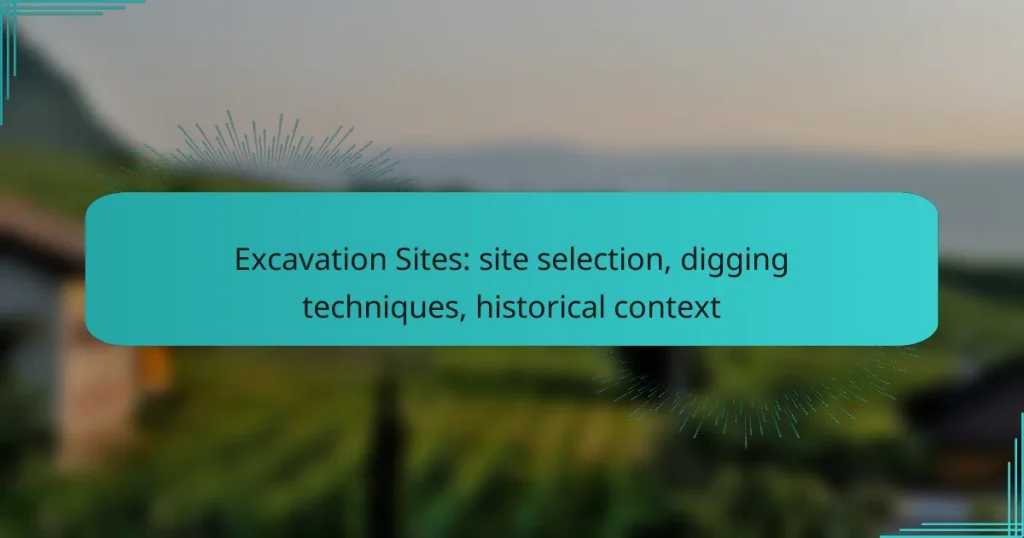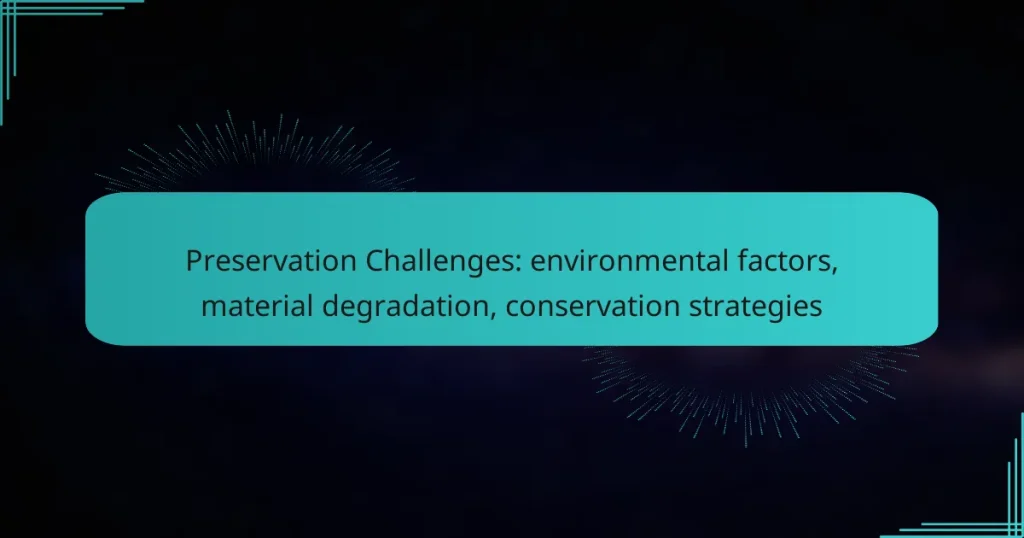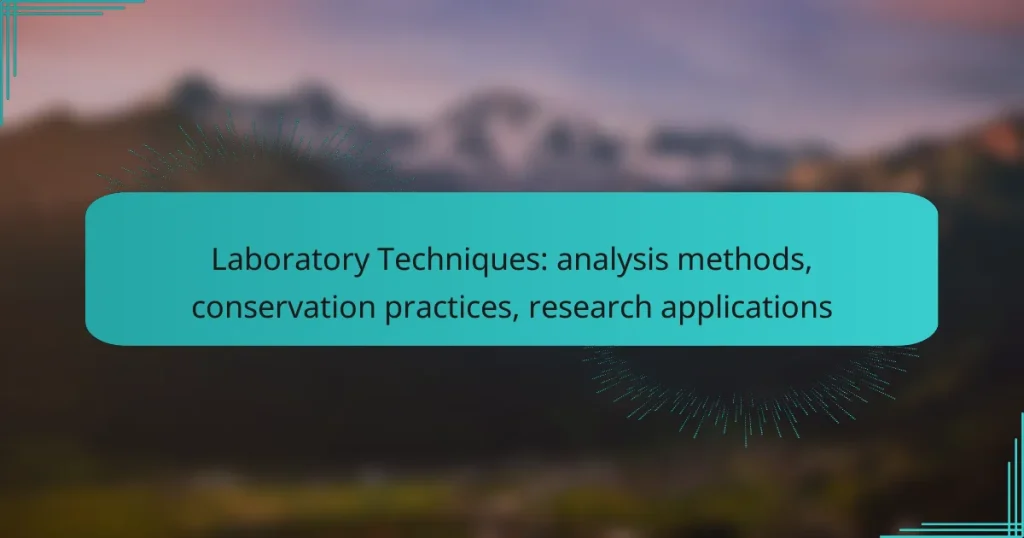The process of discovering prehistoric artifacts is a multifaceted endeavor that combines various techniques and tools to uncover the rich history of past civilizations. In Canada, methods such as field surveys, excavation, and remote sensing are essential, often requiring collaboration with Indigenous groups to ensure cultural sensitivity and accuracy. Legal considerations also play a significant role, necessitating adherence to permits and ownership laws to protect these invaluable resources.
Dating Methods: radiocarbon dating, stratigraphy, contextual analysis
Technology in Archaeology: GIS applications, remote sensing, data analysis
Funding Sources: grant applications, sponsorships, community support
Excavation Sites: site selection, digging techniques, historical context
Interdisciplinary Approaches: collaboration with other fields, research integration, shared methodologies
Preservation Challenges: environmental factors, material degradation, conservation strategies
Public Engagement: outreach strategies, educational programs, community involvement
Laboratory Techniques: analysis methods, conservation practices, research applications
Cooking Utensils: functional designs, cultural practices, historical context
What are the best methods for discovering prehistoric artifacts in Canada?
The best methods for discovering prehistoric artifacts in Canada include field surveys, excavation techniques, remote sensing technology, community involvement, and collaboration with Indigenous groups. Each method plays a crucial role in uncovering and preserving the rich history of Canada’s prehistoric past.
Field surveys
Field surveys involve systematically walking through potential archaeological sites to identify and record artifacts on the surface. This method is often the first step in the discovery process, allowing researchers to assess the likelihood of finding significant artifacts in a given area.
When conducting field surveys, it is essential to consider factors such as terrain, vegetation, and historical context. Researchers typically use GPS technology to map the locations of findings accurately, which aids in future excavations.
Excavation techniques
Excavation techniques are employed once a site is deemed promising based on survey results. This process involves carefully digging to uncover artifacts buried beneath the surface, often using tools like trowels and brushes to minimize damage.
Excavations can vary in scale from small test pits to large-scale digs. It’s important to document each layer of soil and the artifacts found within it, as this stratigraphy provides valuable information about the site’s history.
Remote sensing technology
Remote sensing technology includes methods such as aerial photography, ground-penetrating radar, and magnetometry to detect buried artifacts without extensive digging. These techniques can reveal features like ancient structures or burial sites that are not visible from the surface.
Using remote sensing can save time and resources by allowing archaeologists to focus their efforts on the most promising areas. However, interpreting the data requires expertise and can sometimes lead to false positives.
Community involvement
Community involvement is vital for successful archaeological projects, as local residents often have valuable knowledge about the land and its history. Engaging the community can lead to the discovery of new sites and artifacts that might otherwise be overlooked.
Collaboration with community members can also foster a sense of ownership and pride in local heritage, encouraging the preservation of archaeological sites for future generations.
Collaboration with Indigenous groups
Collaboration with Indigenous groups is crucial in Canada, as many prehistoric artifacts are tied to Indigenous history and culture. Working alongside Indigenous communities ensures that their perspectives and traditional knowledge are respected and integrated into the archaeological process.
This partnership can enhance the discovery process by providing insights into the significance of certain sites and artifacts, as well as ensuring that any excavations are conducted ethically and in accordance with Indigenous laws and customs.
What tools are essential for artifact discovery?
Essential tools for discovering prehistoric artifacts include metal detectors, GPS devices, geological hammers, and excavation tools. Each tool serves a specific purpose, enhancing the efficiency and effectiveness of the discovery process.
Metal detectors
Metal detectors are crucial for locating metallic artifacts buried underground. They work by emitting electromagnetic fields that detect metal objects, making them particularly useful in areas where artifacts may be made of bronze, iron, or other metals.
When using a metal detector, consider the sensitivity settings and ground balance features, as these can significantly affect detection capabilities. It’s advisable to practice in known areas before venturing into more challenging terrains.
GPS devices
GPS devices are essential for mapping and documenting the precise locations of discovered artifacts. They allow archaeologists to create accurate site maps, which are critical for future excavations and research.
When selecting a GPS device, look for features like high accuracy, durability, and ease of use in outdoor conditions. Regularly updating the device’s software can also enhance its functionality and reliability.
Geological hammers
Geological hammers are used to break apart rock and soil to reveal hidden artifacts. These hammers typically have a flat side for striking and a pointed side for prying, making them versatile for excavation tasks.
Choose a hammer that is comfortable to hold and suitable for the type of terrain you will be working in. Always wear safety goggles when using geological hammers to protect against flying debris.
Excavation tools
Excavation tools, such as trowels, shovels, and brushes, are vital for carefully uncovering artifacts without causing damage. These tools allow archaeologists to work methodically and maintain the integrity of the site.
Invest in high-quality excavation tools that are designed for archaeological work. A good practice is to use smaller tools for delicate areas and larger tools for bulk excavation, ensuring a balance between efficiency and care.
What are the legal considerations for artifact discovery in Canada?
In Canada, discovering prehistoric artifacts involves several legal considerations that vary by province. Key aspects include obtaining necessary permits, understanding ownership laws, and adhering to reporting requirements.
Permits and regulations
Before excavating or collecting artifacts, individuals must secure the appropriate permits from provincial or territorial authorities. Regulations differ across regions; for instance, some provinces may require a heritage permit for any archaeological activity, while others may have specific guidelines for certain types of artifacts.
It is crucial to familiarize yourself with local laws, as unauthorized excavation can lead to significant fines or legal action. Always check with the relevant government department to ensure compliance with current regulations.
Ownership laws
Ownership of discovered artifacts in Canada is typically governed by the principle that artifacts found on public land belong to the Crown. This means that individuals who discover artifacts may not have the right to keep them unless they are found on private property and specific conditions are met.
In some cases, artifacts may be subject to Indigenous rights and claims, which can further complicate ownership. Engaging with local Indigenous communities and understanding their perspectives can be beneficial and respectful.
Reporting requirements
Most provinces mandate that any discovered artifacts be reported to the appropriate authorities, often within a specified timeframe. This requirement helps preserve cultural heritage and ensures that artifacts are properly documented and studied.
Failing to report a discovery can result in penalties. It is advisable to keep detailed records of the find, including location, context, and any relevant photographs, to facilitate the reporting process.
How can technology enhance the discovery of prehistoric artifacts?
Technology significantly enhances the discovery of prehistoric artifacts by improving accuracy, efficiency, and the ability to analyze large areas. Tools such as 3D scanning, GIS mapping, and drone surveys allow archaeologists to uncover sites that may have been overlooked using traditional methods.
3D scanning
3D scanning captures detailed images of artifacts and excavation sites, creating precise digital models. This technology allows researchers to analyze the shape, texture, and dimensions of objects without physical handling, preserving their integrity.
When using 3D scanning, it’s essential to ensure proper lighting and positioning to avoid distortions. Common pitfalls include overlooking the need for high-resolution scans, which can lead to loss of critical details.
GIS mapping
Geographic Information Systems (GIS) mapping integrates spatial data to visualize and analyze archaeological sites. This technology helps researchers identify patterns and relationships between artifacts and their locations, aiding in site selection for excavation.
For effective GIS mapping, data accuracy is crucial. Researchers should regularly update their datasets and consider environmental factors that may affect artifact distribution, such as erosion or human activity.
Drone surveys
Drone surveys provide aerial views of archaeological sites, enabling the identification of features that may not be visible from the ground. They can cover large areas quickly and capture high-resolution images for further analysis.
When conducting drone surveys, it’s important to comply with local regulations regarding airspace and privacy. Additionally, using drones equipped with thermal imaging can help detect buried artifacts by highlighting temperature differences in the ground.
What are the challenges faced in discovering prehistoric artifacts?
Discovering prehistoric artifacts involves numerous challenges, including environmental factors, legal restrictions, and the inherent difficulty of locating items buried for millennia. These obstacles can hinder both amateur and professional archaeologists in their quest to uncover historical treasures.
Environmental Challenges
Natural elements such as weather, terrain, and vegetation can significantly impact the discovery of prehistoric artifacts. For instance, dense forests or rugged landscapes may obscure potential sites, making it difficult to conduct thorough searches. Additionally, extreme weather conditions can erode sites or damage artifacts, complicating recovery efforts.
Archaeologists often rely on technology, such as ground-penetrating radar or aerial surveys, to identify promising locations. However, these methods can be costly and may not always yield clear results, requiring careful planning and resource allocation.
Legal and Ethical Considerations
Legal restrictions surrounding excavation sites can pose significant challenges. Many countries have strict laws governing the excavation of archaeological sites to protect cultural heritage. This often requires obtaining permits and adhering to regulations, which can delay projects and increase costs.
Ethical considerations also play a crucial role in artifact discovery. Archaeologists must respect local customs and engage with indigenous communities to ensure that excavations are conducted responsibly and with consent. Ignoring these aspects can lead to conflicts and damage to relationships with local populations.
Technical Limitations
The technical limitations of tools and methods used in archaeology can hinder the discovery of prehistoric artifacts. For example, traditional excavation techniques may not be effective in certain soil types, leading to incomplete findings. Moreover, the preservation state of artifacts can vary widely, complicating identification and analysis.
To overcome these limitations, archaeologists often combine various methods, such as stratigraphic excavation and chemical analysis, to enhance their chances of success. This multidisciplinary approach can improve the understanding of the artifacts and their context, but it requires specialized knowledge and training.









